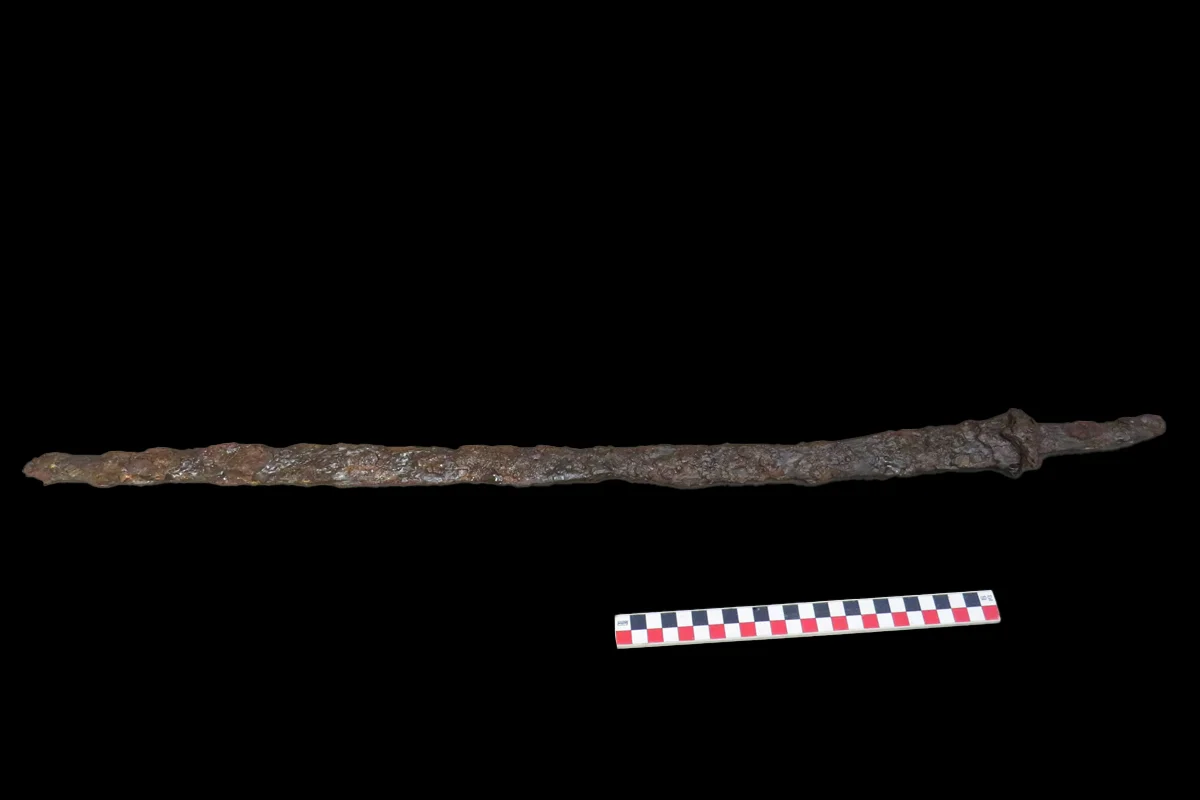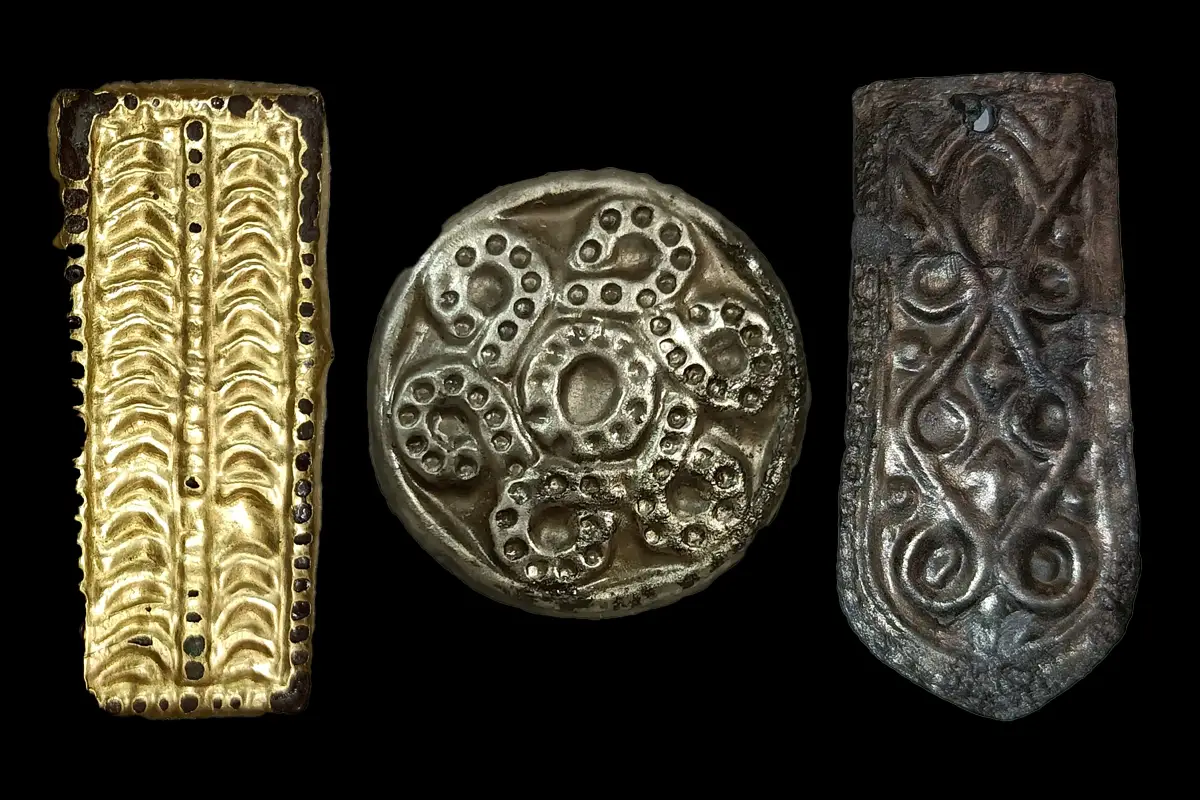Archaeologists from the Szent István Király Museum have unearthed an Avar warrior’s tomb near the border of Aba and Székesfehérvár in Hungary.
According to experts, the tomb dates to between AD 670 and 690 during the Middle Avar period, when the region formed part of the Avar Khaganate – a powerful nomadic empire that dominated the Pannonian Basin and large areas of Central and Eastern Europe.
They are probably best known for their invasions and destruction in the Avar–Byzantine wars from 568 to 626 and for their influence on the Slavic migrations to Southeastern Europe.
Excavations of the tomb have revealed a treasure trove of exquisitely preserved grave goods, including a rare sabre blade and hilt, silver belt fittings, a long knife, gilded braid ties, and glass bead earrings.
Evidence of disturbance indicates that the tomb had been looted in antiquity, but the robbers appear to have intentionally left the warriors weaponry and some of the funerary offerings.

One of the excavation’s most challenging moments came during the removal of the sabre. Fragile after more than thirteen centuries underground, it required a specially designed wooden crate constructed by volunteers from the museum’s Community Archaeology Program. This careful method allowed the sabre to be lifted intact, preserving both the weapon and its surrounding soil for a micro-excavation in a laboratory setting.
The restoration process, recently completed by conservator Petra Bódisné Szalontai, revealed the true beauty and craftsmanship of the artifacts.
The sabre, with its elegant curvature and traces of fine decoration, stands out as one of the rarest Avar weapons ever recovered. Alongside it, the restored silver and gilded ornaments speak to the warrior’s high status and the refined artistry of Avar metalworkers.
Header Image Credit : Szent István Király Museum
Sources : Szent István Király Museum





